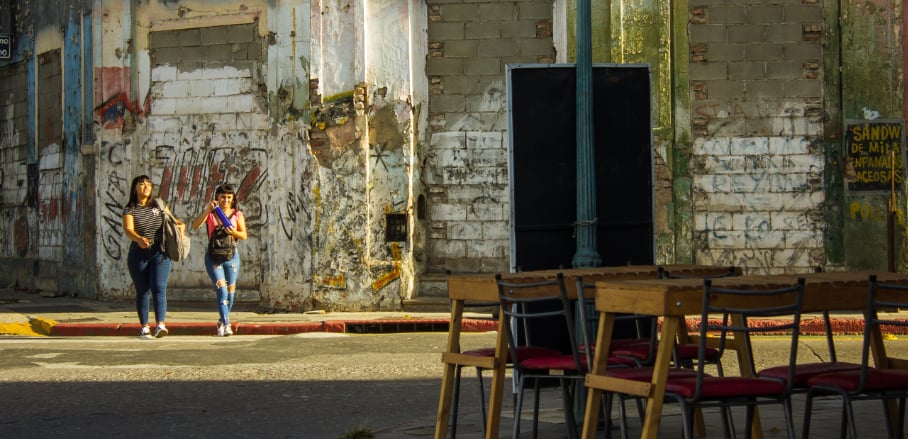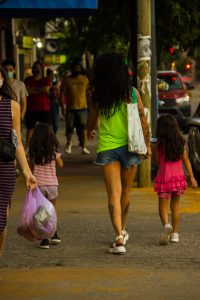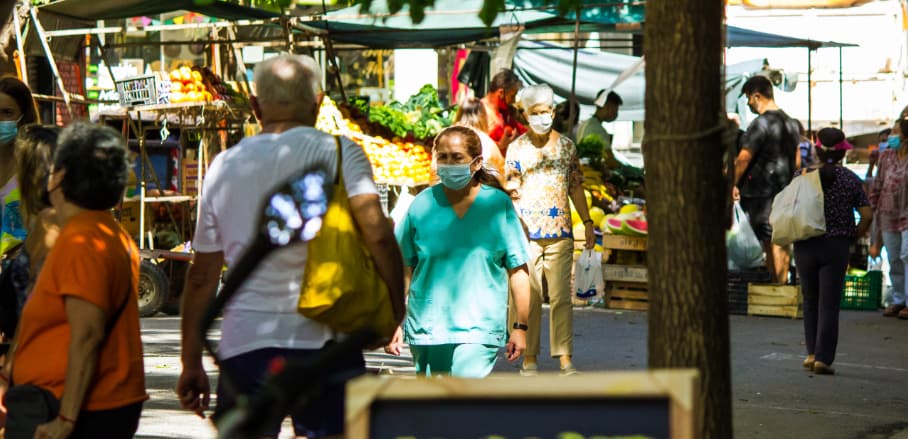Feminist Urbanism – Confronting Patriarchal Living Conditions in Urban Spaces
Feminist urbanism is a concept that challenges the inequality in cities that particularly affects women among other marginalised groups. Ana Falú preps us with knowledge on how to overcome the patriarchal living conditions constituting our urban environment so far.
Feminist urbanism questions the urbanism of modernity’s utopia which, although it contributed to improving living conditions in the cities, left out women by positioning itself from the androcentric view, centring itself around a universal masculine, young, white, productive, and heterosexual male.
Urbanism is a concept that is always also political regarding the permanent tension of economic powers that materialise cities and appropriate their common goods according to certain social classes.
Meeting the Needs of All Members of Society
The feminist approach to urbanism seeks to develop a new episteme based on pluralism, incorporating new concepts and methods – such as participatory research – to account for the differentiated demands and uses of the city by men, women, and non-binary people.
The intersection of urbanism and feminism is an approach that aims to address the omission of certain groups in urban planning and policy-making. This includes women and other marginalised identities such as indigenous, black, migrant, refugee, LGBTIQ+, and people of different age groups, among others, whose rights are often not considered. By taking into account factors such as socio-demographic and economic circumstances as well as their situated conditions of habitat, feminist urbanism thrives to create more inclusive and equitable urban environments that meet the needs of all members of society, regardless of their identity or background.
Questioning Supposedly Neutral Concepts
In other words, feminist urbanism breaks into architecture, urban and territorial planning, by questioning supposedly neutral concepts such as family, home, people, or population, which make a large part of the population invisible. Moreover, neither the multicultural differences in the way of inhabiting the territories nor the territories in their variations and conditions are recognised. “It is a question of making visible how social relations in regard to gender are constitutive of those that are expressed in the conformation of urban space, and how this in turn, is the reproduction of these relations.”
Latin America, for instance, is a continent of extreme inequality gaps. In Argentina, 43.1 per cent of the population lives in poverty. Feminist urbanism challenges the inequality in cities that affects the whole, but particularly women, who constitute the majority of the population living in poverty – in addition to having twice as many children as women with higher incomes.

Feminist urbanism aims to meet the needs of all members of society. © 2022 CISCSA – Centro de Intercambio y Servicios para el Cono Sur Argentina
More than 40 per cent of households are under the sole responsibility of women, who mostly work in the informal market with much lower incomes than men. The patriarchal episteme is based on the invisibility of women. This is especially evident looking at the sexual division of labour, which assigns them the responsibility of reproduction and care while devaluing, underestimating, and denying the value of this work.
Speaking of Territories Instead of Urbanised Cities
Central to the feminist proposal is the incorporation of territory as an active variable as well as the territorial vulnerability index as an analytical tool, which results from the combination of factors such as unsatisfied basic needs (UBN) in households, the cadastral value of land, access to infrastructures and services, among others. Thus, it is crucial to speak of territory rather than the urbanised city, because, in the extensive and complex cities of Latin America, there are inhabited territories that do not account for a city.

The patriarchal episteme is based on the invisibility of women. © 2022 CISCSA – Centro de Intercambio y Servicios para el Cono Sur Argentina
Thus, feminist urbanism does not only focus on inclusive social and gender policies but also on the visibility of social subjects and the location of housing, services, and facilities. Furthermore, the concept puts the vitality of public spaces, streets, and squares at the centre of its attention by promoting a greater perception of security in the face of the violence that pushes women out of the public space back into their homes. Finally, including a feminist perspective in urban planning also means taking accessibility, mobility as well as travel costs, distances, and times into consideration.
Creating More Equitable, Just, and Liveable Urban Environments for All
Feminist urbanism is a concept that politicises everyday life. It recognises the need to place it at the centre of its analysis – including its reproductive and productive aspects. From this approach, it is crucial to deconstruct patriarchal and neoliberal epistemologies in order to advance transformative changes. Feminist urbanism also emphasises the importance of collective solutions over individual ones, understanding that public and collective solutions can be powerful allies in improving the lives of women. By prioritising the collective, feminist urbanism seeks to give women more time – which is often the scarcest commodity in their lives. Ultimately, the goal is to create more equitable, just, and liveable urban environments for all people, especially women.
The inclusion of women’s right to the city in public agendas, such as in the New Urban Agenda expresses the continuous and tireless action of feminists to promote these issues and transform established imaginaries, challenging a patriarchal, misogynist, racist and homophobic society.
Many organisations, including CISCSA Feminist Cities and the Women and Habitat Network of Latin America and the Caribbean, are dedicated to advocating for women’s equal rights. They focus on bringing attention to the sexual division of labour, which positions women as caregivers and supporters of domestic life. Through their work, these organisations aim to demonstrate how women use the city and neighbourhoods differently as well as contribute to making women’s demands visible and recognised. By highlighting these differences, they hope to challenge and transform the prevailing gender inequalities that persist in urban planning and policy-making.
